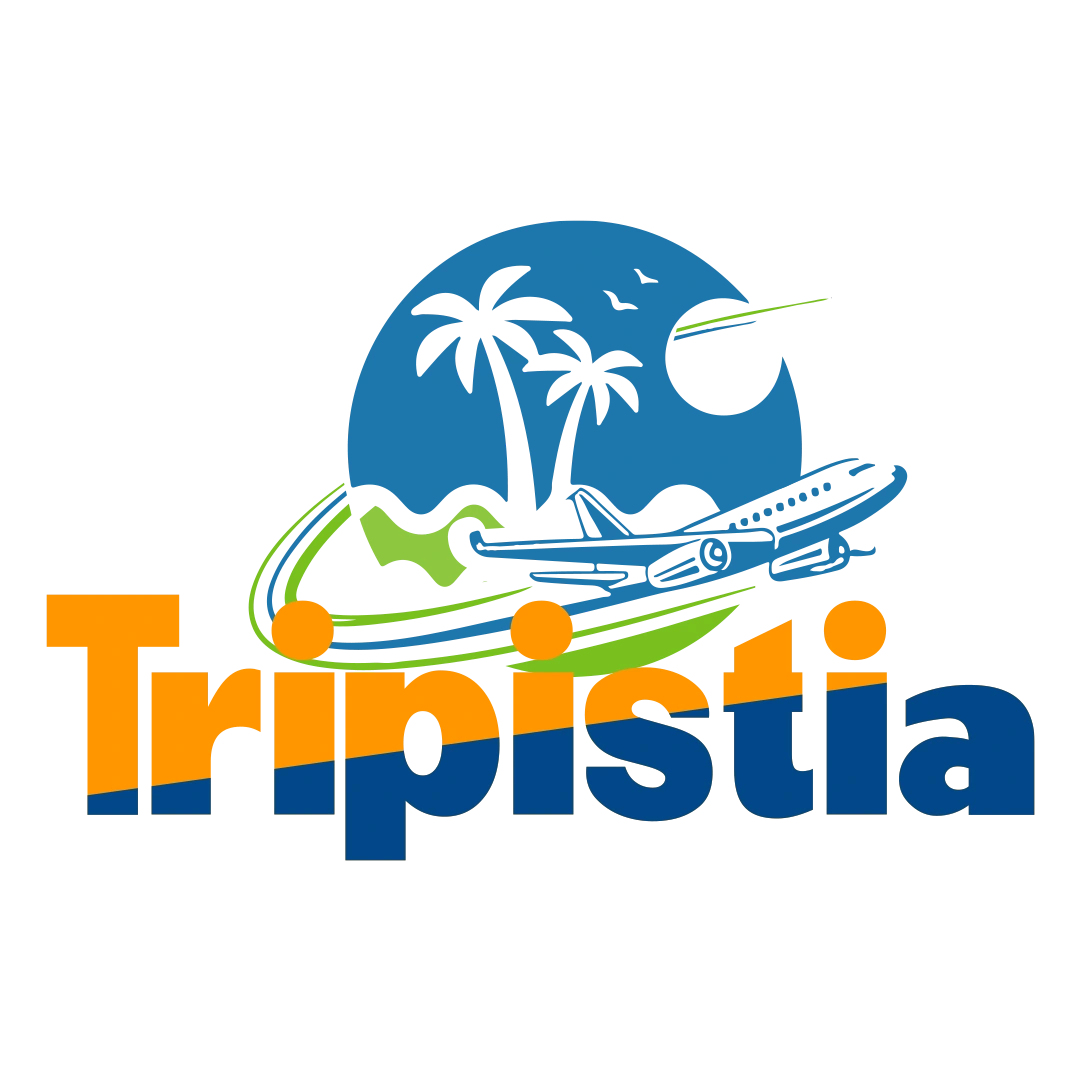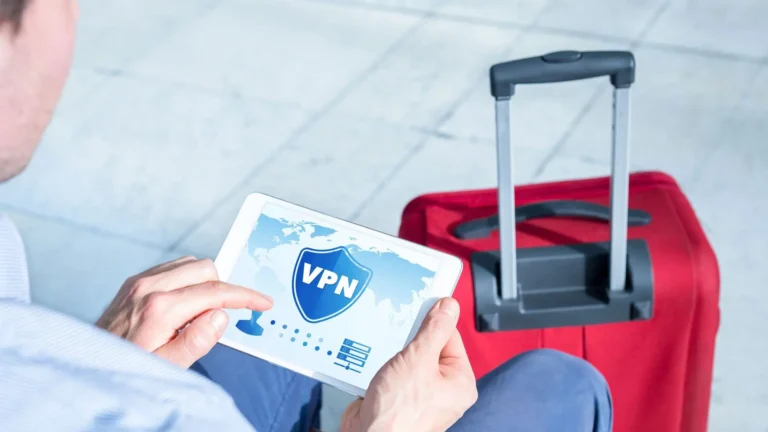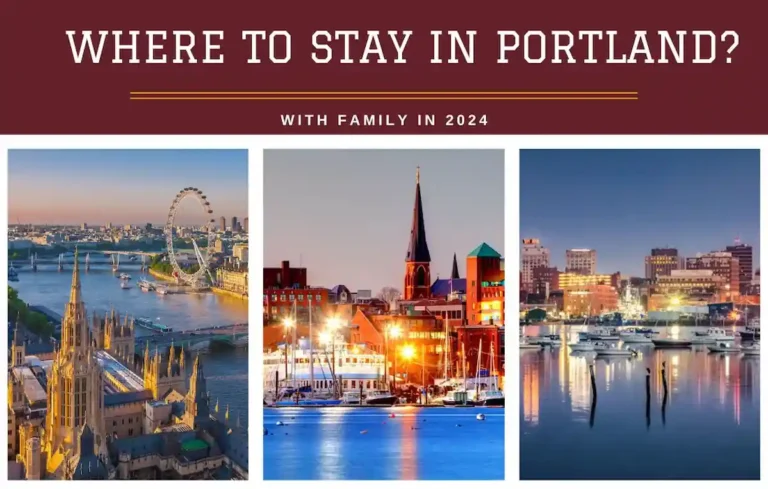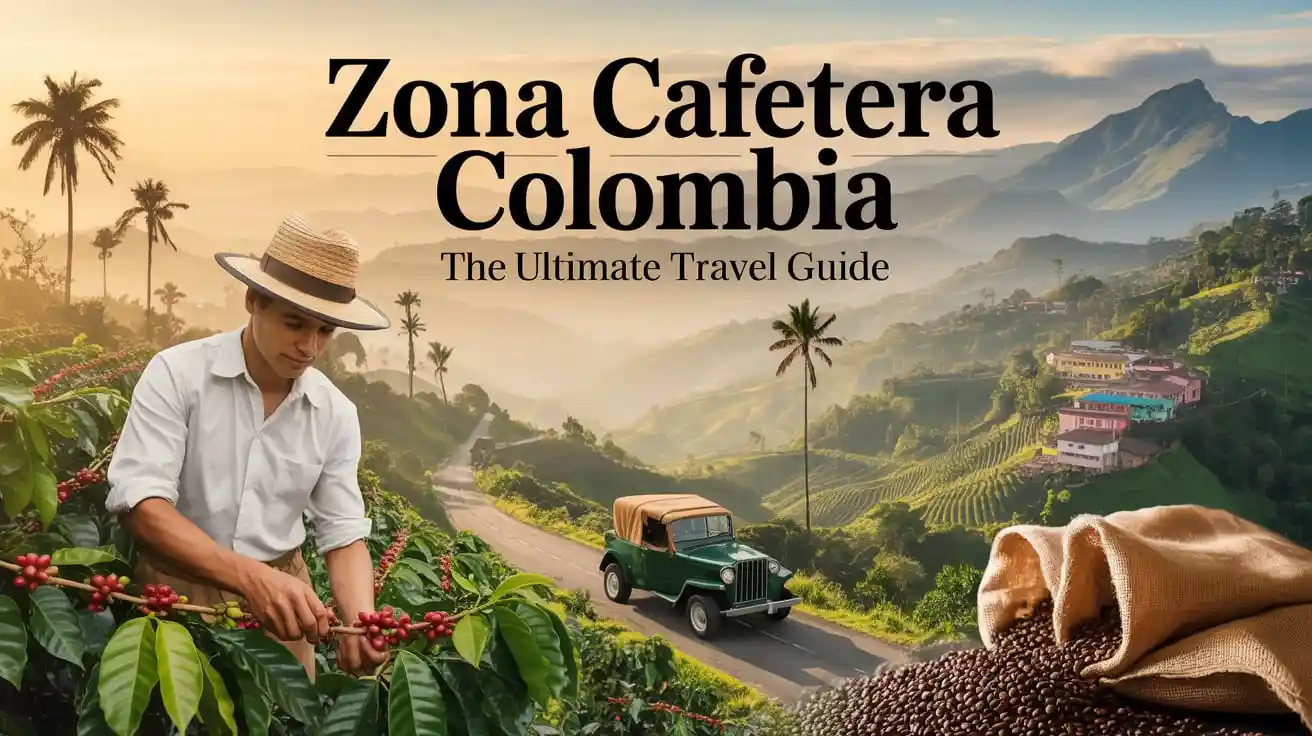
You might expect Colombia to mean turquoise Caribbean beaches or Cartagena’s cobbled streets, but honestly, Zona Cafetera Colombia has its own kind of magic. Picture lush green hills, quaint pueblos painted in every color under the sun, and that unmistakable aroma of freshly roasted beans drifting through the air… Feels like stepping into a dream, right?
I guess what I’m trying to say is this guide is your backstage pass to the Colombian coffee region. I’ll walk you through how to get there, where to stay, what to do, when to go, and how to experience coffee culture with heart—not just a photo op. Perfect if you’re browsing ‘Zona Cafetera Colombia Mapa’ one minute, dreaming of a finca tour the next. Sort of a virtual road trip before your actual one.
Imagine early mornings, barista workshops at a boutique hacienda, afternoons hiking through towering wax palms in Valle de Cocora, evenings sipping coffee by an open fire.
And it’s not just about the coffee—though that’s why you’re here, let’s be honest—it’s the culture too. Friendly paisas, easy pace, an authentic slice of Colombian life. Volume up on that playlist and go explore.
🗺️ Where Is Zona Cafetera & Why Visit?

So, where is this Coffee Zone, really? It’s tucked into the Andean foothills—what Colombians call the Eje Cafetero. You’re crossing three departments: Caldas, Risaralda, and Quindío.
On a map—a “Coffee region Colombia map,” if you will—it forms a triangle of green wonder, kind of perched between the Andes and the Caribbean coast ideas. UNESCO even recognized it as Coffee Cultural Landscape… which is a fancy way of saying the whole region feels like living heritage.
What makes it special? A few things… coffee farms or fincas that open to guests, thick cloud forests, thermal springs, Andean panoramas for days, vibrant towns with artisan markets, and even bird life like Andean condors overhead.
Plus, Los Nevados National Park, or Nevados National Park, is practically the backdrop—think volcanos like Nevado del Ruiz. Add in unique spots like Otun Lake or Plaza de Bolívar in Manizales, and it’s easy to see why even travel experts call it a must-visit.
Honestly, though, what I love most is how relaxed everything feels. The pace isn’t frantic. Walking into a boutique resort in Filandia or Salento, someone will ask how your day was before they ask for payment.
And the crime rates are low compared to bigger cities—so you can wander more freely among Wax Palm forests or artisanal cafés without feeling edgy. Colombia’s other regions might have flashier reputations, but Zona Cafetera? It’s the steady heart of the country, and people feel it when they arrive.
✈️ How to Get to Zona Cafetera
You’ve pinned Zona Cafetera on your vision board… now how do you actually get there?
The region feels remote in the best way—mountains, winding roads, rolling fields—but it’s still pretty accessible. You’ve got a few decent entry points depending on your travel flow.
Closest Airports
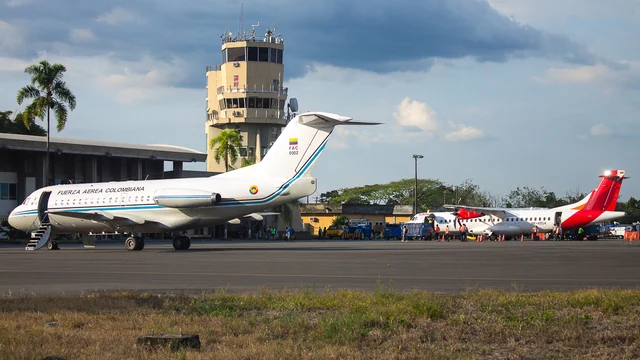
There are three main airports that connect you directly to the heart of the coffee region:
- El Edén Airport (AXM) – in Armenia, super close to most coffee fincas.
- Matecaña International Airport (PEI) – in Pereira, probably the most convenient if you’re flying in from Bogotá or Medellín.
- La Nubia Airport (MZL) – in Manizales, smaller but fine if you’re coming from within Colombia.
Flights from Bogotá, Medellín, or even Cartagena are short and frequent. Honestly, if you’re already in the country, it’s way easier to hop on a domestic flight than deal with the 6–10 hour bus rides… unless you’re the scenic-road-trip type.
Transportation Options
Once you land, you’ve got a few choices. Some are smoother than others.
- Domestic flights: Definitely the fastest way to arrive.
- Intercity buses: Cheap and available, but the mountain roads? Not for the faint of heart (or stomach).
- Private transfers: Perfect if you want less hassle. Hotels like Riad Dar Awil or boutique haciendas can sometimes arrange these.
- Car rental: Great if you want to explore on your own schedule, just note that roads are twisty and signage isn’t always intuitive.
Pro Tip: Don’t rely on Uber in smaller towns. Ride-share apps barely function here outside of major hubs. If you’re in Salento or Filandia, your best bet is calling a taxi driver directly or asking hotel staff to arrange transport.
🏡 Where to Stay in Zona Cafetera
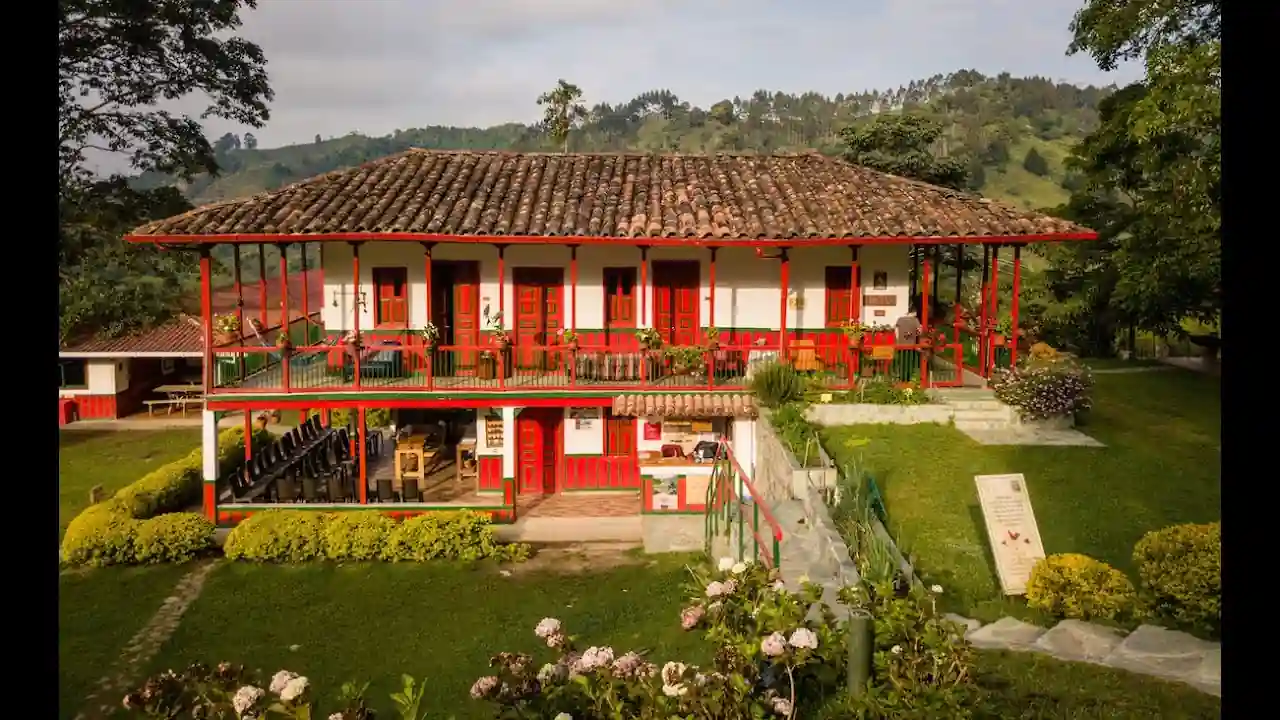
Choosing where to base yourself in the Zona Cafetera kind of depends on what kind of trip you’re chasing. Coffee and hammocks? Go rustic. Short on time and want modern comforts? Stay in a city. There’s something for everyone.
Best Towns to Base Yourself
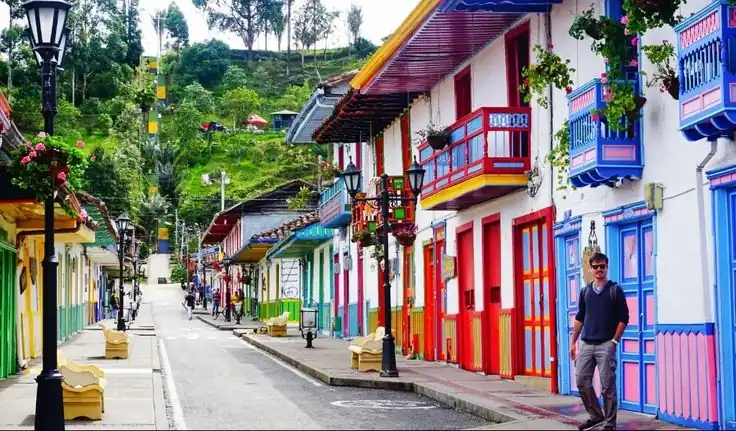
Each town has its own vibe.
Here’s a quick rundown:
- Salento – The go-to for most travelers. Super charming, great access to Cocora Valley. Bustling but not overwhelming.
- Filandia – A quieter, slightly less touristy version of Salento. Fantastic lookout points and a slower pace.
- Manizales – Urban base with good infrastructure. It’s got culture, nightlife, and hot springs just outside the city.
- Armenia – Not the most picturesque, but it’s practical if you’re flying in/out and renting a car.
Other honorable mentions? Pereira for its transportation links, and smaller gems like Pijao or Buenavista if you’re after something truly offbeat.
Accommodation Types
You’ll see a full spectrum here—from budget to bougie. A few options to look into:
| Type | Vibe | Good For |
|---|---|---|
| Coffee Haciendas | Scenic, immersive, historic | Coffee lovers, couples |
| Eco-lodges | Sustainable, nature-rich | Solo travelers, hikers |
| Budget Hostels | Social, basic, central | Backpackers, digital nomads |
| Luxury Resorts | All-inclusive, often remote | Honeymoons, retreat seekers |
| Guesthouses | Local-run, warm, modest | Cultural immersion fans |
Some cool names that pop up a lot in reviews: Riad Kniza, Mnar Castle, and Dar Fes Tresor if you want comfort. If you’re more about charm and morning views over coffee trees, check out smaller fincas like Helena Adentro or eco-hostels that throw in a little adventure (hello, wildlife experiences and tejo nights at Cancha de Tejo Los Amigos).
Bonus Tip: Ask whether the property includes a coffee tour, or access to a coffee process museum—some bundle this into their room rate and it’s such a fun way to get immersed right away.
Best Things to Do in Zona Cafetera
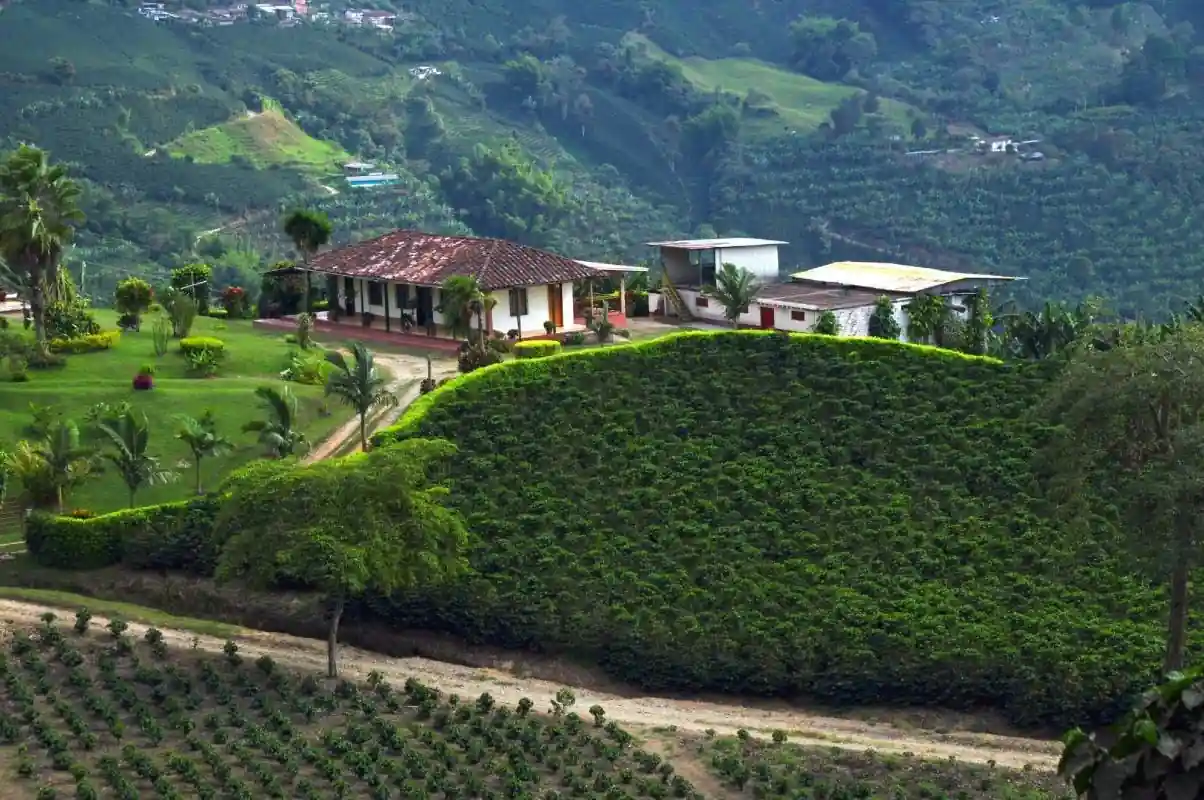
There’s something grounding about this region… the kind that slows your pace without you realizing it. One minute you’re hiking through foggy trails, the next you’re sipping espresso beside a coffee plant.
The list of things to do in Zona Cafetera isn’t about hitting “must-sees” in a rush. It’s more like… choosing your own rhythm.
Visit a Coffee Farm (Finca Tour)
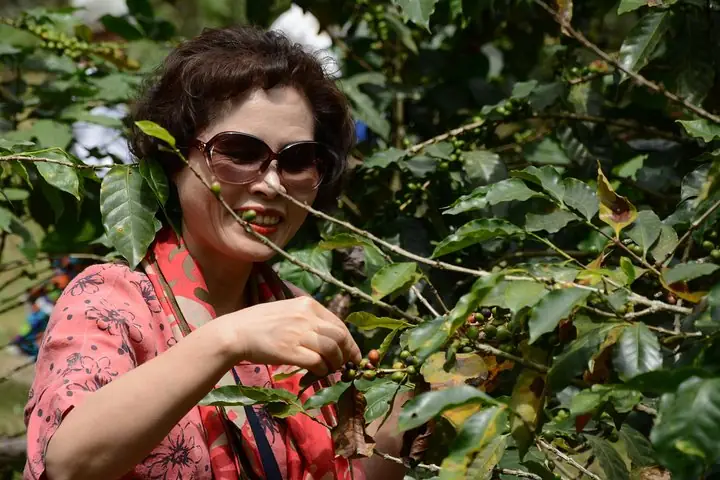
You came for the coffee, right? Might as well understand where it comes from.
There are tons of fincas (coffee farms) that offer tours. Some are pretty rustic. Others are like open-air classrooms with baristas teaching you how to identify the acidity in your cup.
Here’s what a typical tour might include:
- A walk through the farm to see the beans on the tree
- An explanation of the coffee-making process (from drying to roasting)
- A tasting session — sometimes blindfolded, which is more fun than it sounds
- Optional workshops (how to brew like a pro at home)
The Coffee Cultural Landscape here is actually a UNESCO World Heritage Site, so yeah, this isn’t just some touristy gimmick. It’s the real deal.
Hike the Cocora Valley (Valle de Cocora)
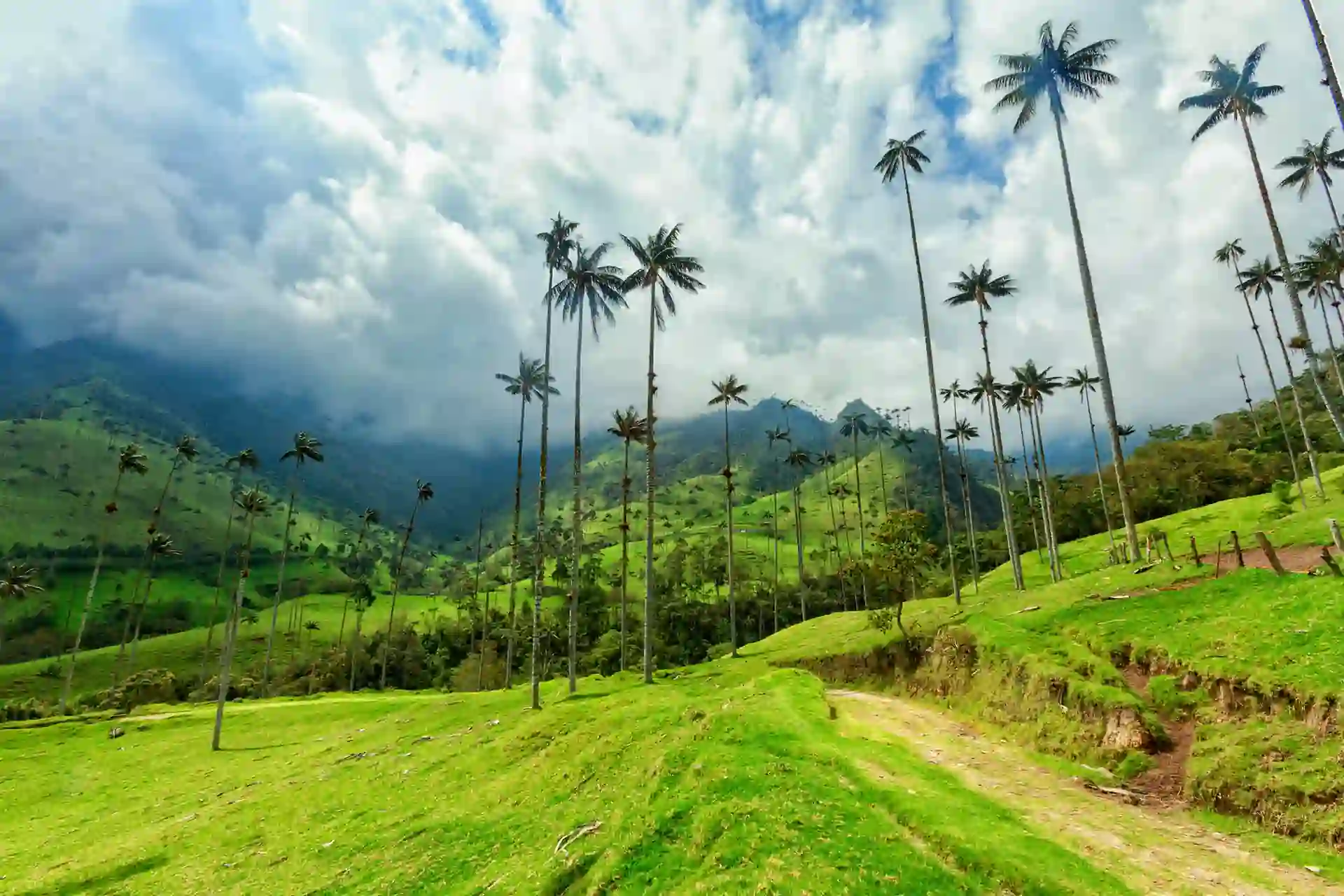
You’ve probably seen the photos. Towering wax palms stretching up through a sea of green, clouds curling around the peaks. This is the iconic hike in the Zona Cafetera.
What you need to know:
- There are several loops — one short and photogenic, the other long and muddy (about 5–6 hours, with suspension bridges and jungle paths).
- You can do it on foot or by horseback.
- Most people start from Salento — get there early and hop in a Willy Jeep. Yeah, those WWII-era Jeeps still function as public transport here.
Pack waterproof shoes, and expect misty weather. That’s part of the magic.
Optional stop: Valle de la Samaria, a quieter alternative with similar views and fewer crowds.
Explore Colorful Towns & Artisan Markets
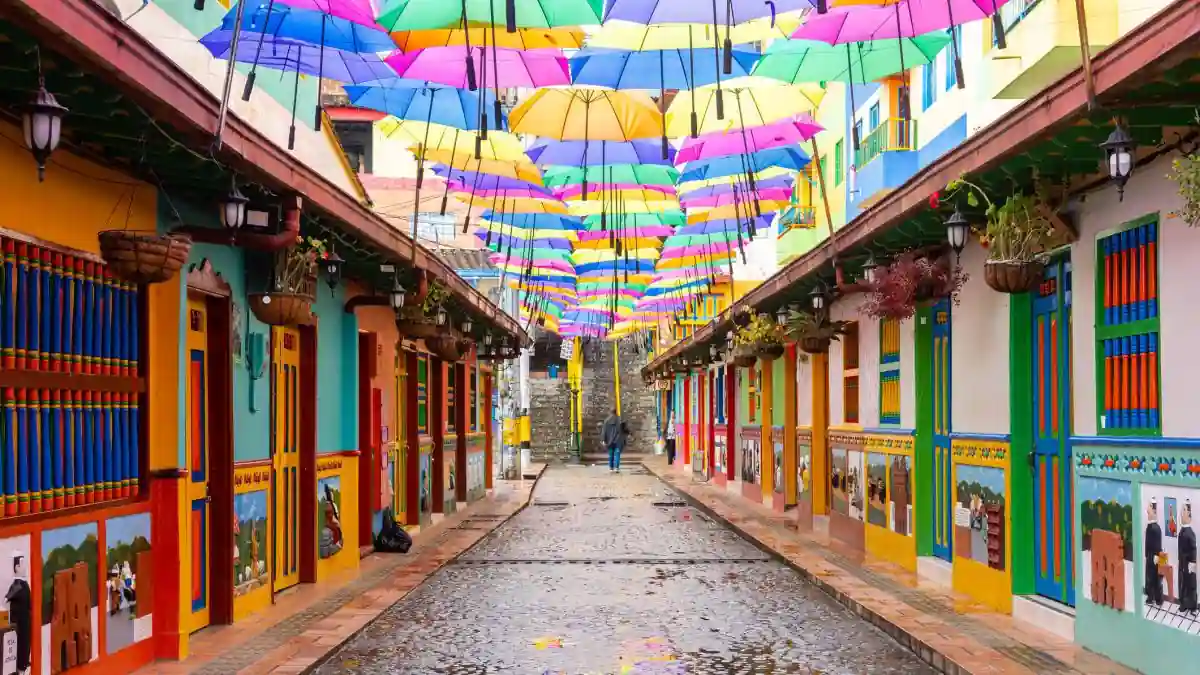
Wandering through these towns feels like walking through someone’s watercolor sketchbook. Narrow streets, balconies with flowers spilling over, and locals selling woven bags or guava candies.
Some favorite spots:
- Filandia – Check out Mirador Colina Illuminado and the town square for live music or casual people-watching.
- Salento – The main strip, Calle Real, is full of artisan shops. Great for handcrafted jewelry or that perfect hammock.
- Manizales – More urban, but don’t miss Plaza de Bolívar, Catedral de Manizales, or the Monumento a Los Colonizadores for some history tucked into your stroll.
And yes, there’s even a Museum of Culture Coffee in Montenegro if you’re up for a niche but super cool detour.
Soak in Thermal Waters
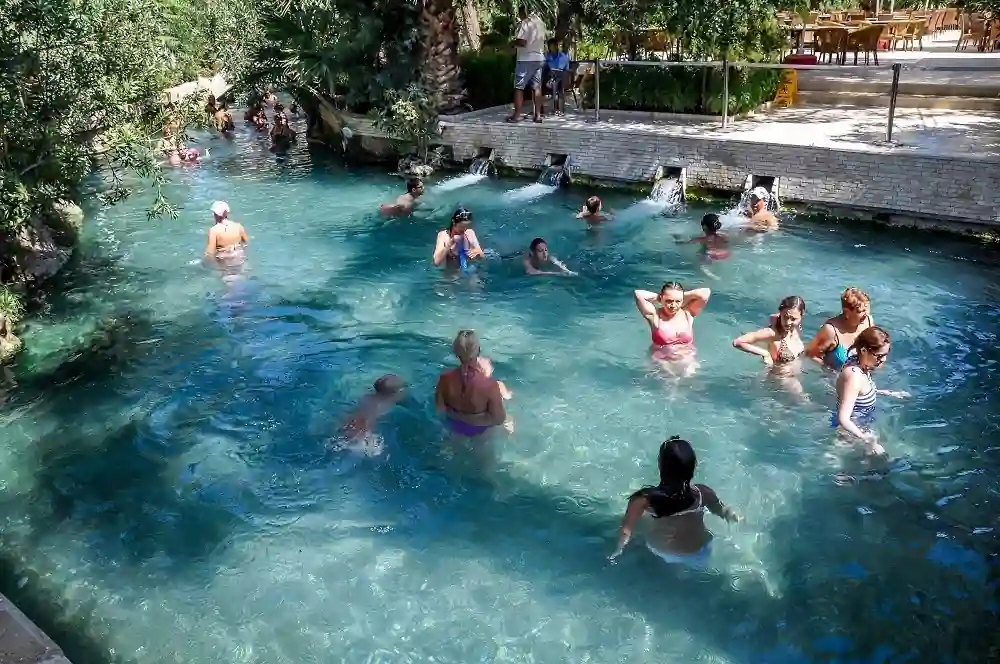
After all that trekking and sightseeing? Time to slow things way down.
Head to:
- Santa Rosa de Cabal – famous for cascading hot springs tucked into the forest.
- Termales del Otoño – closer to Manizales, set at the foot of Los Nevados.
The waters are naturally heated by the surrounding Nevado del Ruiz volcano. Some springs are rustic, others more spa-like, with full massage and mud treatment packages.
Pro Tip: Go on a weekday or early morning to avoid crowds. And bring your own towel unless you’re okay renting one that’s seen better days.
—
🍽️ What to Eat & Drink in Zona Cafetera
You might come for the views or the hiking, but something about the food here lingers just as long in memory. It’s rich, hearty, comforting. And then there’s the coffee… obviously.
Must-Try Dishes
- Bandeja Paisa – A literal tray of food. Beans, rice, ground beef, chorizo, fried egg, plantain, avocado. It’s a beast and a tradition.
- Arepas de Choclo – Sweet corn pancakes with cheese, crispy and golden.
- Trucha – Fresh trout, often grilled or fried. Common around Salento and streams near Otun Lake.
- Patacones – Flattened and fried green plantains, served as sides or with meat.
If you stumble on a roadside place with plastic chairs and a long line of locals… that’s probably where you want to eat.
Coffee Culture & Cafés
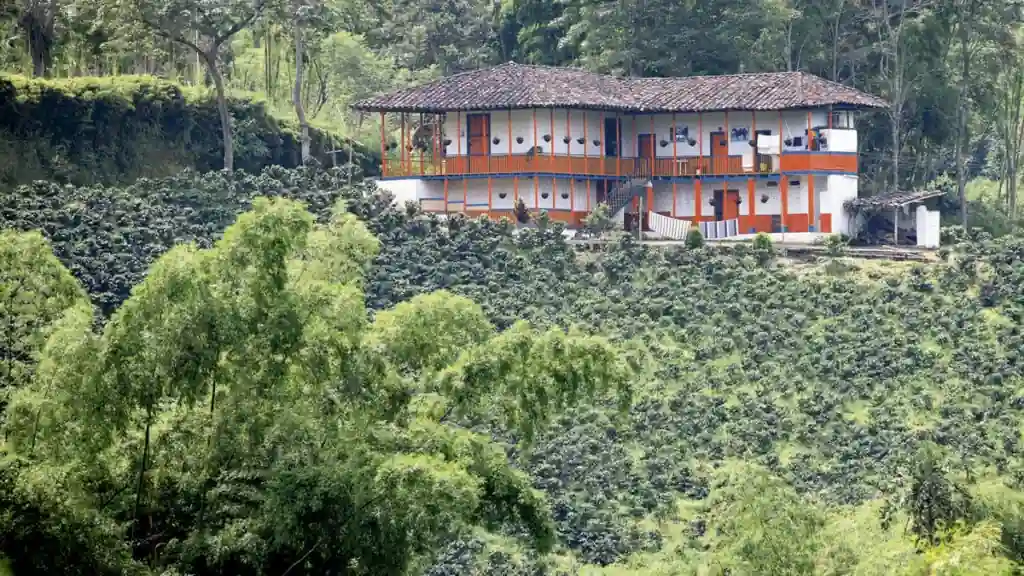
Sure, you’re in Colombia, but the Zona Cafetera has its own flavor when it comes to coffee. It’s a little more artisanal here. Baristas actually talk to you about the roast.
Favorite spots travelers rave about:
- Café Jesús Martín (Salento) – Stylish but relaxed. Great variety of brewing methods.
- Catación Pública (Bogotá-based but sometimes hosts pop-ups or events in the Eje Cafetero)
- Any café run by a finca… you’ll usually get an unmatched cup and a view to go with it.
And if someone invites you for onces (pronounced own-ses), say yes. It’s Colombia’s late-afternoon coffee + pastry ritual. Think tea time, but way more relaxed.
Local Tips
- Coffee usually comes sweet unless you ask for it “sin azúcar”
- If you’re craving something fancy, try Helena Adentro in Filandia. It’s trendy but heartfelt.
- Tipping is appreciated but not mandatory at small cafés. If you liked the vibe, round up your change.
🌦️ Best Time to Visit Zona Cafetera
Weather in Colombia’s Coffee Region is kind of… its own thing. You’re in the Andes, but also near the equator. So, while the calendar might say one thing, what you’ll feel depends a lot on altitude and microclimates.
Climate Overview
The good news? You can visit year-round. The temperatures stay fairly steady — usually between 17°C to 24°C (that’s around 63°F to 75°F). Think spring, almost every day.
But the rain… comes and goes. Especially in:
- April to May
- October to November
These months are the rainiest, though it’s not like endless downpours. More like brief, heavy showers that pass quickly. That said, some trails (like Cocora Valley) can get muddy and slippery. So good boots matter.
Clear skies usually grace the region from December through March. It’s drier, great for hiking, but also more crowded — especially during Colombian holidays.
Coffee Harvest Seasons
Now, if you’re coming specifically for coffee experiences, timing matters a bit more.
- Main harvest: September to December
- Smaller harvest (mitaca): March to May
During these months, farms are bustling. You’ll see workers harvesting, drying beans in courtyards, and prepping batches for roasting. It just… feels more alive.
If you’re into the behind-the-scenes stuff, that’s when to come.
🟢 Pro Tip: Some fincas only offer full tours during harvest seasons. Always check ahead if you’re planning to do a deep-dive coffee experience.
—
💡 Travel Tips for Visiting Zona Cafetera
This isn’t just about what to pack. These are the things I wish someone had casually told me over a coffee — the little lessons you pick up between towns, on muddy trails, or from a chatty taxi driver.
Language Barrier
You don’t need to speak Spanish fluently… but having a few key phrases helps a lot. Especially in small towns like Buenavista or Pijao where English is rare.
A few handy ones:
- “¿Cuánto cuesta?” (How much does it cost?)
- “Sin azúcar, por favor.” (Without sugar, please — for coffee)
- “¿Dónde está el baño?” (Where’s the bathroom?)
If you’re someone who freezes up when trying to speak Spanish, keep Google Translate or a translation app ready. Offline mode is your friend.
And when in doubt? Smile. It goes surprisingly far here.
What to Pack
You’ll need a bit of everything — even for a short stay.
Here’s a quick rundown:
| Item | Why You Need It |
|---|---|
| Light layers | Days are warm, nights can get chilly |
| Waterproof jacket | Rain shows up when it feels like it |
| Hiking shoes or trail runners | For Cocora Valley and muddy town roads |
| Small daypack | Essential for coffee tours or long walks |
| Cash | ATMs aren’t in every town |
| Travel-size sunscreen | The Andean sun is sneakier than you think |
| Insect repellent | Especially near rivers or thermal baths |
Don’t forget your camera or phone with space, especially around Valle de Cocora or Otun Lake — places you’ll want to capture, even if you usually don’t.
Safety
Zona Cafetera is, generally speaking, one of the safest regions in Colombia. The towns feel sleepy in the best way, and locals are famously warm and helpful.
Still, a few common-sense tips apply:
- Don’t walk alone late at night, especially down quiet side streets
- Keep valuables close on intercity buses
- Use apps like DiDi or Cabify in cities like Manizales, since Uber isn’t as widespread
If you’re renting a car, note that roads can be narrow and winding — beautiful, yes, but not always beginner-friendly. Drive cautiously and avoid night drives between towns.
🟢 Pro Tip: If you’re planning hikes in Los Nevados or near Nevado del Ruiz, check park conditions ahead. Closures due to volcanic activity or weather aren’t unusual.
📝 Conclusion
There’s something about the Zona Cafetera that lingers with you… even after you’ve left. Maybe it’s the slow mornings with thick Colombian coffee in hand, the muddy boots from a hike through wax palm forests, or that cheerful señora at a roadside café who gave you unsolicited but delicious arepas.
The Eje Cafetero isn’t flashy or fast-paced. It’s a region that asks you to slow down… to actually taste things. Like the coffee, sure, but also the moments. The quiet ones, especially.
You could easily spend just a few days bouncing between towns — Salento, Filandia, maybe Manizales or Armenia — and feel satisfied. But the more time you give this region, the more it gives back. Stories, scenery, little surprises. Maybe even a better understanding of Colombia beyond the clichés.
And when the weather turns, or your Spanish fails, or your bus is inexplicably delayed… you’ll probably still find yourself smiling. That’s the Zona Cafetera effect.
So yeah, whether you’re chasing the perfect shot of the Valle de Cocora, diving into the Coffee Cultural Landscape, or just trying to figure out which town has the best café vibe (spoiler: they all do in their own way), this part of Colombia offers something real. Something worth savoring.
—
💬 Frequently Asked Question
1. Is Zona Cafetera safe for solo travelers?
Yes, especially compared to larger cities. Just stick to well-reviewed stays, avoid wandering late at night alone, and keep your stuff close on buses.
2. Can I visit the coffee region without joining a tour?
Totally. You can DIY it with buses, taxis, or a rental car. That said, having a guide at a finca or for hiking helps you appreciate more of the experience.
3. How many days should I spend here?
Minimum 3–4 days. If you want to see multiple towns, hike, and visit a few farms, a week is even better.
4. What’s the weather like throughout the year?
Mild and spring-like most of the time. Rainy seasons hit in April–May and October–November, but it’s still doable with a jacket and solid shoes.
5. Do I need to book accommodations in advance?
If you’re traveling during holidays or coffee harvest months, yes. Otherwise, you’ll usually find something, but the best boutique stays fill up fast.
6. What’s the difference between Salento and Filandia?
Salento is more popular and touristy, with easier access to Cocora Valley. Filandia feels quieter and more local — equally beautiful but fewer crowds.
7. Can I get around without speaking Spanish?
It helps to know a few phrases. In rural spots, English is rare. But with a translation app, gestures, and a smile, you’ll manage fine.
8. Are the coffee tours worth it if I’m not a coffee nerd?
Absolutely. It’s more than coffee — it’s culture, history, and some really gorgeous landscapes. Plus, the tastings usually convert even the skeptics.
9. What’s the food like in Zona Cafetera?
Hearty, rustic, and delicious. Bandeja Paisa is the heavyweight, but you’ll also find amazing trout, arepas, and fresh tropical fruit. Also… don’t skip the pastries.
10. Is it easy to reach the Zona Cafetera from Medellín or Bogotá?
Pretty easy. There are short domestic flights to Pereira, Armenia, or Manizales. Or you can take a long but scenic bus ride — especially from Medellín through the Andes.
